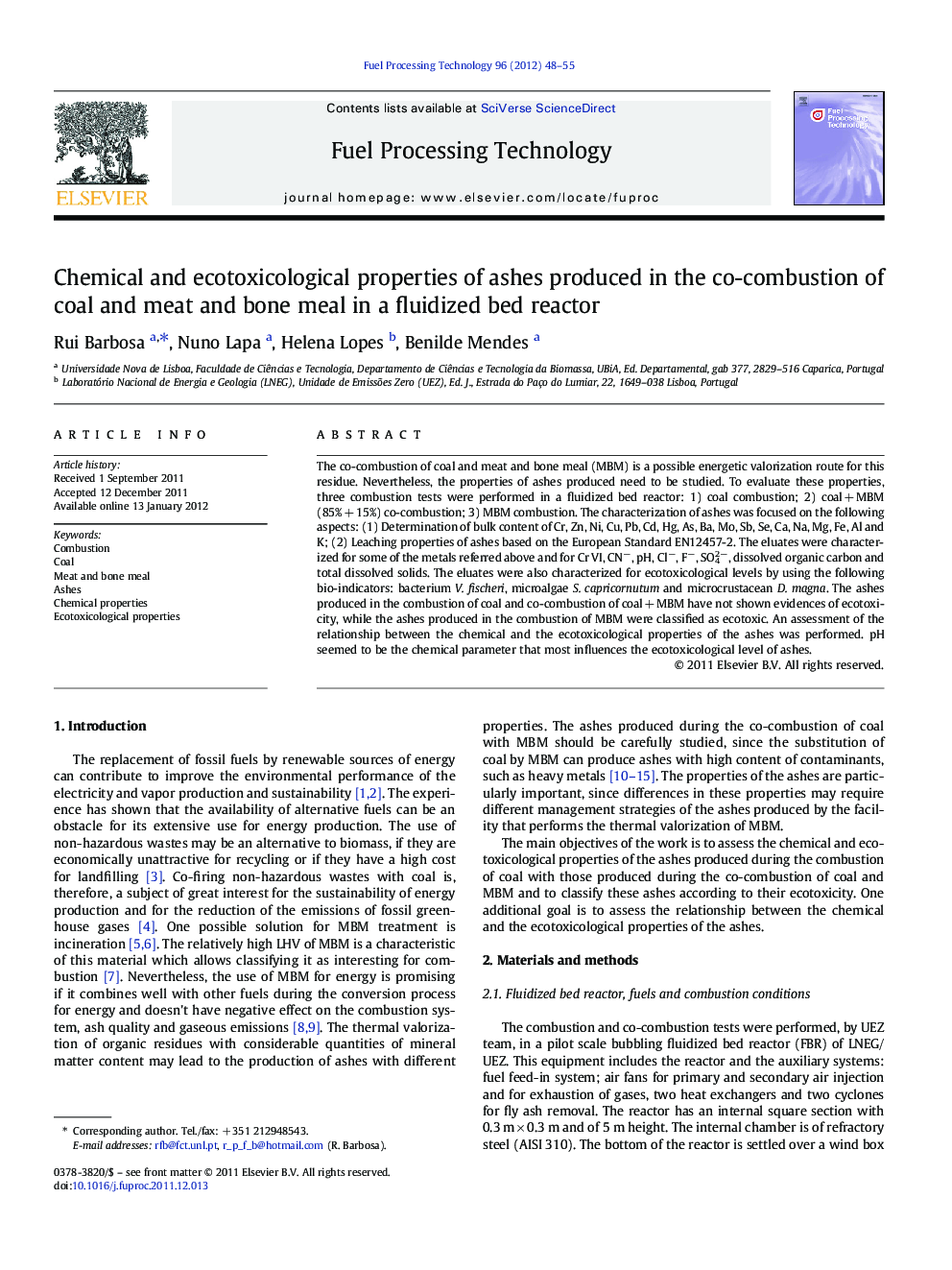| Article ID | Journal | Published Year | Pages | File Type |
|---|---|---|---|---|
| 210387 | Fuel Processing Technology | 2012 | 8 Pages |
The co-combustion of coal and meat and bone meal (MBM) is a possible energetic valorization route for this residue. Nevertheless, the properties of ashes produced need to be studied. To evaluate these properties, three combustion tests were performed in a fluidized bed reactor: 1) coal combustion; 2) coal + MBM (85% + 15%) co-combustion; 3) MBM combustion. The characterization of ashes was focused on the following aspects: (1) Determination of bulk content of Cr, Zn, Ni, Cu, Pb, Cd, Hg, As, Ba, Mo, Sb, Se, Ca, Na, Mg, Fe, Al and K; (2) Leaching properties of ashes based on the European Standard EN12457-2. The eluates were characterized for some of the metals referred above and for Cr VI, CN−, pH, Cl−, F−, SO42−, dissolved organic carbon and total dissolved solids. The eluates were also characterized for ecotoxicological levels by using the following bio-indicators: bacterium V. fischeri, microalgae S. capricornutum and microcrustacean D. magna. The ashes produced in the combustion of coal and co-combustion of coal + MBM have not shown evidences of ecotoxicity, while the ashes produced in the combustion of MBM were classified as ecotoxic. An assessment of the relationship between the chemical and the ecotoxicological properties of the ashes was performed. pH seemed to be the chemical parameter that most influences the ecotoxicological level of ashes.
► The substitution of coal by MBM produced ashes with higher content of heavy metals. ► Similar leaching rates of heavy metals from the same type of ashes. ► The biological responses were, probably, associated with the pH of the eluates. ► More studies are needed to identify the causes of the levels of ecotoxicity. ► A methodology to correlate chemical and ecotoxicological properties was developed.
